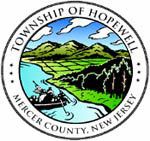By Frank Mustac, Contributor
As a redevelopment plan for the Pennytown property potentially enters the final phases, at least one resident had some questions about the project during a recent Township Committee meeting.
Mike Kiernan, of Marshall’s Corner, spoke during the meeting’s public comment portion on Aug. 22 and asked officials if the property in question was going to be sold to a developer and if there were plans to approve water and sewer lines for it.
Though he said he was personally against the idea of extending water and sewer to the Pennytown property, Mayor Kevin Kuchinski said the issue may be a moot point.
“Speaking for myself and not on behalf of the committee, I think there are some monstrous barriers for any party to try and extend sewers there,” the mayor said. “I am less concerned about (potable) water. I am more concerned about sewers and the potential of unbridled development. I would personally be against bringing public sewers to Pennytown.”
Located at the junction of routes 31 and 654, and once the site of a shopping center, the 25-acre Pennytown property was purchased by Hopewell Township in 2008 for $6.65 million.
The current redevelopment plan, prepared by Brian M. Slaugh, of the Clarke Caton Hintz firm in Trenton, was undertaken with the knowledge that Hopewell Township will now sell the property.
Restoring the Pennytown property to a more productive state, while preserving and reusing the historic single-family residence known as the Marshall House on the land that is part of the hamlet of Marshall’s Corner, are just two of several objectives outlined in the plan. The proposal also calls for preserving the pond and stream corridor along the Stony Brook Branch.
Committeeman John Hart agreed with the mayor’s sentiment, suggesting that whomever purchases Pennytown will “have to be self-sufficient.”
The redevelopment plan Pennytown will be reviewed by Hopewell Township’s planning board on Sept. 22.
During that meeting, the board will make recommendations on whether there are any parts of the plan that are inconsistent with the township’s master plan, as well as offer suggestions regarding the plan itself.
“(The plan is) modest in its approach,” Committeewoman Julie Blake said, explaining that the plan is considerate both environmentally and aesthetically.
Following the planning board’s determination, the committee will decide on whether it formally approves the plan during its Sept. 26 meeting.
After listening to the committee’s feelings on the matter, Mr. Kiernan said the focus on ensuring the area does not become overdeveloped eased the concerns he and his neighbors had.
Though he said the neighborhood would not be against the construction of a CVS on that property, Mr. Kiernan said he hoped to see other sections spared from development.
“We would like to see the northern end of Marshall’s Corner-Woodsville Road, the wooded area, be saved,” he said. “Also, sell the Marshall House.”
The CVS company has proposed building a pharmacy and store at the site of the current Sunoco gas station, located at the corner of Route 31 and Ingleside Avenue.
The process of adopting a redevelopment plan is governed under the auspices the state’s Local Redevelopment and Housing Law, which may provide incentives for the new owners of Pennytown to update buildings and facilities on the property if certain requirements are met. The state law also provides a mechanism by which zoning can be changed.
“We want to get as much use out of Pennytown and as much money back out of it,” Mr. Hart said. “Whatever is best for the township, that’s what we’re going to do.”

